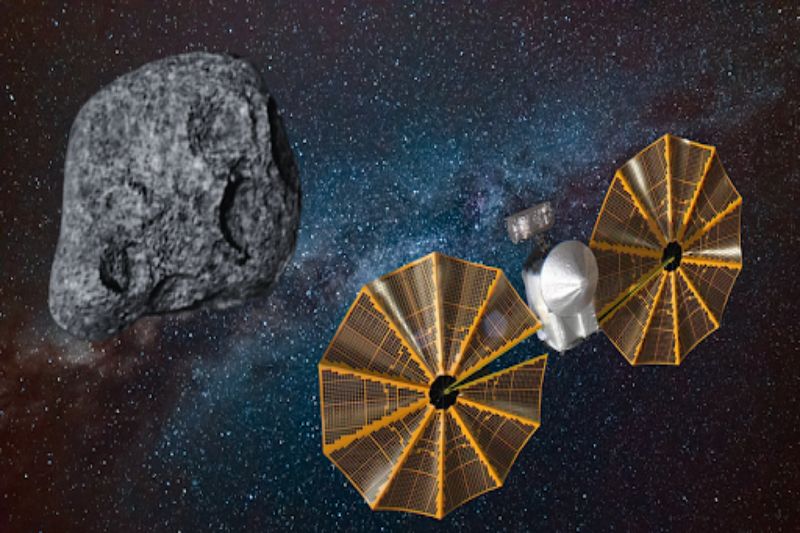In preparation for its journey to the previously undiscovered Trojan asteroids, which trail Jupiter in its solar orbit, NASA’s asteroid-hopping Lucy mission is finally gaining steam in space.
The Lucy spacecraft will ignite its main engines off-Earth on Wednesday, January 31, marking the first time since its launch in August 2021. Approximately half of the spacecraft’s fuel will be used up when Lucy’s primary engines fire. A second, more significant maneuver will come after this, and according to NASA, it is now scheduled for Saturday, February 3.
These two operations scheduled for early 2024 have the goal of reducing Lucy’s speed by approximately 2,000 miles per hour (3,217 kilometers per hour).
The spacecraft has only experienced maximum velocity changes of around 10 mph (16 kph) prior to these two maneuvers, but those changes were sufficiently minor to be accomplished by the spacecraft’s secondary, less powerful thrusters.
The spacecraft will receive a second gravity assist from Earth in December 2024, which should propel it onto a new trajectory, marking the next significant milestone for Lucy after these maneuvers. During this flyby, Lucy will pass as close to Earth as 230 miles (370 kilometers).
Specifically, the combination of these 2024 maneuvers will move the spacecraft out of its present solar orbit—which only skims the main asteroid belt between Mars and Jupiter—and enable it to make a November 1, 2023, flyby of the tiny asteroid Dinkinesh, also known as “Dinky.” Lucy assisted NASA scientists in learning that Dinky is, in fact, a double (double-double, to be exact) asteroid system during this process.
Lucy’s new orbit will enable the spacecraft to travel beyond the main asteroid belt. Lucy will have the chance to visit the minor main asteroid belt body 52246 Donaldjohanson in April 2025 during this voyage.
Following this, Lucy will follow the path of the gas giant around the sun, reaching Jupiter and the Trojan domain. The Trojans are divided into two loose groups, the Greek camp being located slightly ahead of the gas giant and the Trojan camp being located behind it.
In August 2027, Lucy will make her maiden journey to the Greek camp of Trojan asteroids, aiming its sights on the asteroid Eurybates and its satellite, or “moonlet,” Queta.
Subsequently, the spacecraft will pass by three more moonlets and four more Trojan asteroids before finally arriving on Earth in 2031, the last visit before the Lucy mission ends in 2033.
Topics #Lucy asteroid #NASA










